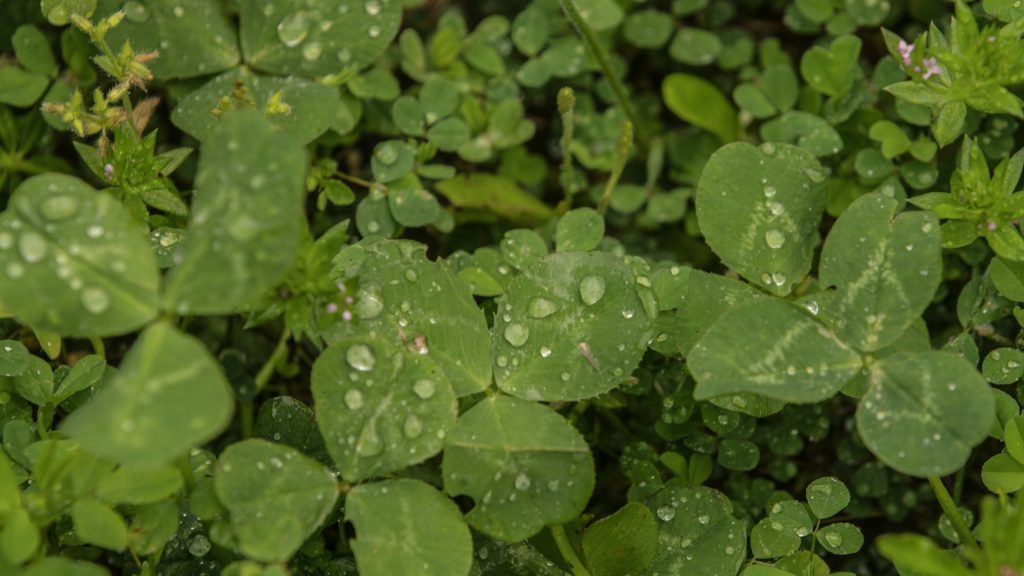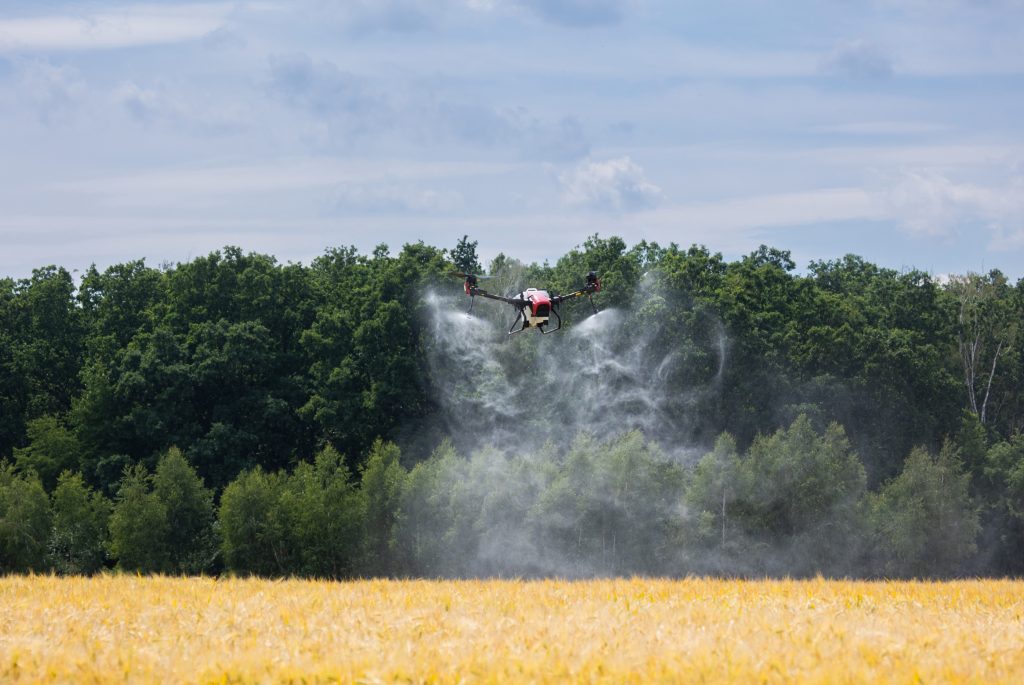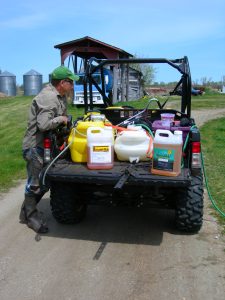An “adjuvant” is a broad term for any substance, or combination of substances that are used to increase the efficacy or potency of a solution, in our case pesticides, herbicides, fungicides and others. In a spray solution it is used to improve the activity or application characteristics. Using the correct adjuvant may reduce or even eliminate spray application problems. There are a lot of different adjuvant companies and a lot of different combinations, but we will try to keep understanding adjuvants simple. Since they do not have actual pesticide or herbicide components, they are not required to be registered by the Environmental Protection Agency (EPA). But adjuvants do have labels and should be followed like any other herbicide or pesticide you are using.
The term “pesticide” covers any substance used to control a specific pest, including plants, insects and the fungus among us. Herbicides, insecticides, fungicides and many others, are all types of “pesticides.” The term “-cide” comes from the Latin word “to kill.” So, when I use the word pesticide, it could include herbicides, insecticides, etc. Adjuvants can be added to your pesticides to make them perform better.
Adjuvants can perform one or several functions including: improved coverage, adherence and penetration, buffering and water conditioning, drift control, compatibility, and even for reducing foam building up in the spray tank.
There are two main types of adjuvants; formulation adjuvants and spray adjuvants. Formulation adjuvants are added by the manufacturer when producing the products and spray adjuvants are separate products added by the applicator. We will focus on spray adjuvants. Spray adjuvants can also be split into two groups; activator adjuvants and special purpose adjuvants.

The Lindsey Way
ACTIVATOR ADJUVANTS
Activator adjuvants are designed to improve the “activity” of the herbicide or pesticide.
Surfactants
Also called wetter/spreaders are the most commonly used adjuvants. The name “surfactant” comes from the phrase “surface acting agents.” They physically change the properties of the spray solution and droplets. They can help improve the solution’s ability to emulsify, spread, disperse and stick by reducing surface tension. This also allows the pesticide to adhere to the leaf surface for longer periods of time especially on plants that have a hairy or waxy surface that make it difficult to cover. We mostly use non-ionic surfactants (NIS) in the ag industry which means it has a neutral/no charge.
At one time, glyphosate was sold with and without an added surfactant. These days its hard to find any that doesn’t have surfactants preformulated. The words “plus” and “pro” added to the names of glyphosate products indicate that a surfactant is included. Additional surfactants can still help.
Oils
Oils can help reduce surface tension in surfactants, but they are mainly used to help with penetration. This goes for plants and insects. These oils can “burn” through the leaf surface or exoskeleton of an insect or to help the plant take up the herbicide or pesticide. Many oil adjuvants also contain a surfactant, providing the penetration properties of oil and the spreading properties of a surfactant. Examples of oils are: Crop Oils, Crop Oil Concentrates (COC), Vegetable Oil Concentrates (VOC), Metholated Seed Oils (MSO). Some of these oils can be more abrasive (hotter) than others. You have to be careful when spraying over a traited crops (corn/soybeans). You may see burning on the leaf surface.
When spraying grasses in clover plots with clethodim, a COC is normally recommended on the label to get a better kill.
Nitrogen Fertilizers
The most widely used nitrogen based adjuvant is Ammonium Sulfate (AMS). Sometimes they replace adjuvants, but, when used with systemic herbicide or pesticide products, are usually included as part of the tank mixture with a surfactant and a crop oil concentrate. Ammonium Sulfate can also be used to reduce problems with hard water. AMS has been a good additive to glyphosate and has shown to improve activity of the herbicide. Be sure to include AMS to the tank before adding glyphosate.

Sodel Vladyslav
SPECIAL PURPOSE ADJUVANTS
Special purpose adjuvants are used to fix a specific problem with the spray solution.
Drift Control
Drift control adjuvants can be can be added to a spray solution to help keep the pesticide on target by increasing the average droplet size. They reduce the “fine” particles you see when spraying that can easily be carried by wind and thermal activity.
Defoaming
Foam is created by air bubbles during agitation and the type of surfactant being used can make it worse. Defoaming products work best when used as a preventative but also can be added after foam is present. I’ve had enough foam come out of a 40-gallon sprayer to fill up the bed of a truck before. It’s always handy to keep a defoaming adjuvant with you when going to the field.
Water Conditioners
The main portion of a spray mixture is water, and its properties in a solution can change the effectiveness of the pesticide. Buffering agents are used to stabilize the pH if the water is high in the spray mixture. Water samples can be sent in to labs much like a soil sample and tested for pH and existing minerals.
Hard water may also be an issue depending on where you are located. Its caused by the presence of non-soluble minerals like calcium and magnesium. A water conditioning agent will bind to molecules in hard water ions to maintain the effectiveness of the pesticide. Water Conditioners should be poured into the spray tank first before adding any pesticides/fertilizers.
Compatibility Agents
Since herbicides and insecticides are sometimes mixed with fertilizers and other pesticides, they may not always be chemically or physically compatible. You may run into mixing issues like clogged pumps or hoses. A compatibility agent may not only improve the compatibility of the tank mix, but also results in uniform and stable mixtures ensuring accurate applications.

Todd Amenrud
HOW TO USE
DIY Tests
If you plan to mix several pesticides and or fertilizers, and you’re not sure if they are compatible, perform a simple jar test. Grab a quart sized glass jar and fill 16 oz’s of water from the same water source you plan to use, then add each product in proportionate ratios. Shake well and let sit for 10 to 15 minutes. If there are any compatibility issues you should see them fairly quickly. Make sure you wear protective equipment when performing these tests and when you apply it.
Rates
Some labels read as amount per acre and some read as percent of spray volume. When asked to add an adjuvant at a percent per volume, its easy to do the math.
EXAMPLE: A common rate on surfactants is .25% V/V (quarter of a percent per volume of solution).
- 100 gallons of water x 128 oz/gal = 12,800 oz x .0025 = 32 oz’s (1 quart)
- 25 gallons of water x 128 oz/gal = 3,200 oz x .0025 = 8 oz’s
If your tank is 100 gallons, this means to add 1 quart of surfactant. For a 25-gallon tank, add 8 ounces of surfactant.
Again, be sure and follow all label instructions and call your local dealer if needed. Thanks and good luck!
Join our weekly newsletter or subscribe to GameKeepers Magazine.
Your source for information, equipment, know-how, deals and discounts to help you get the most from every hard-earned moment in the field.









